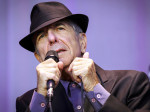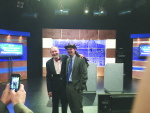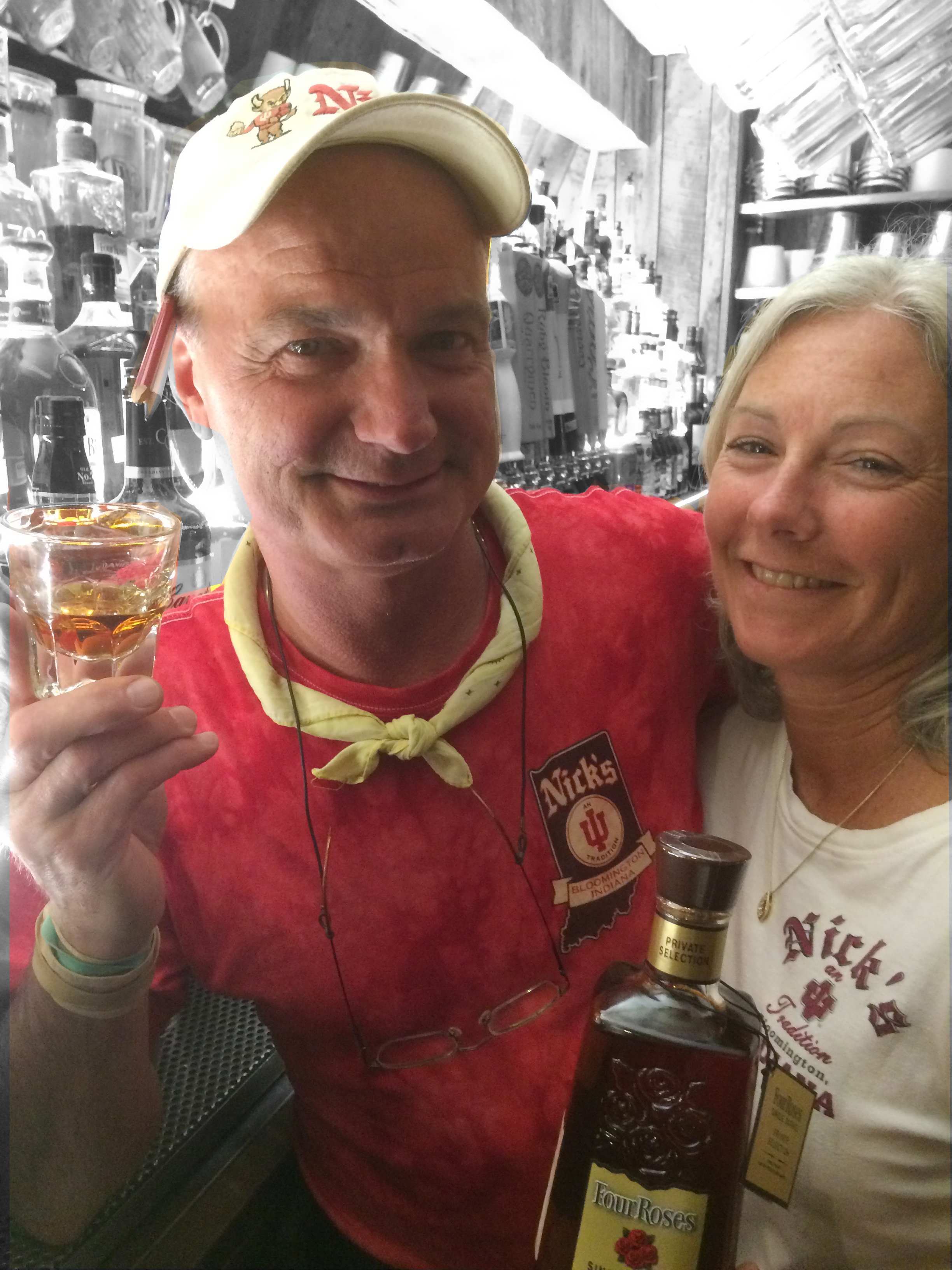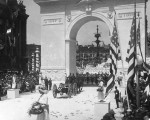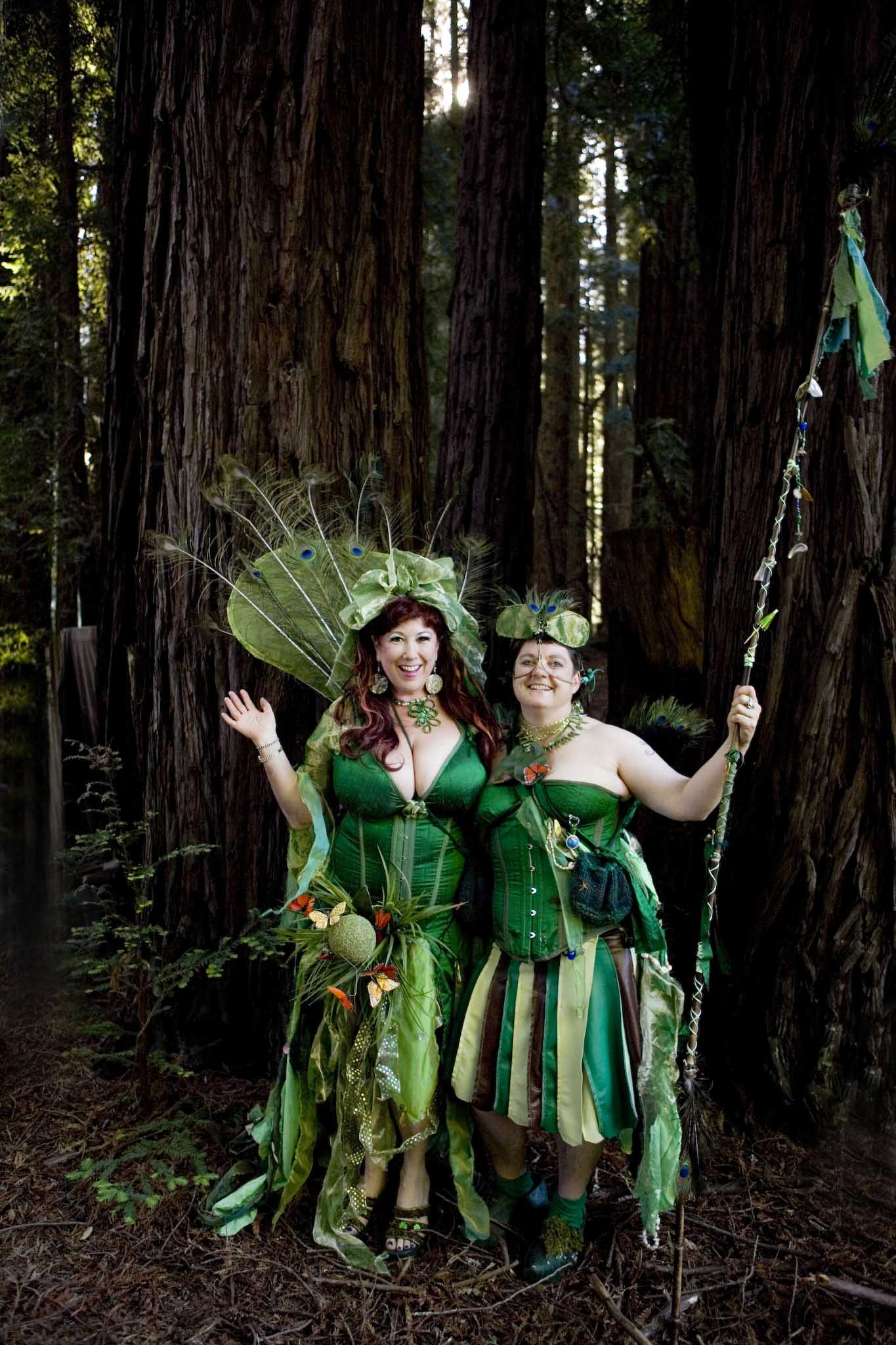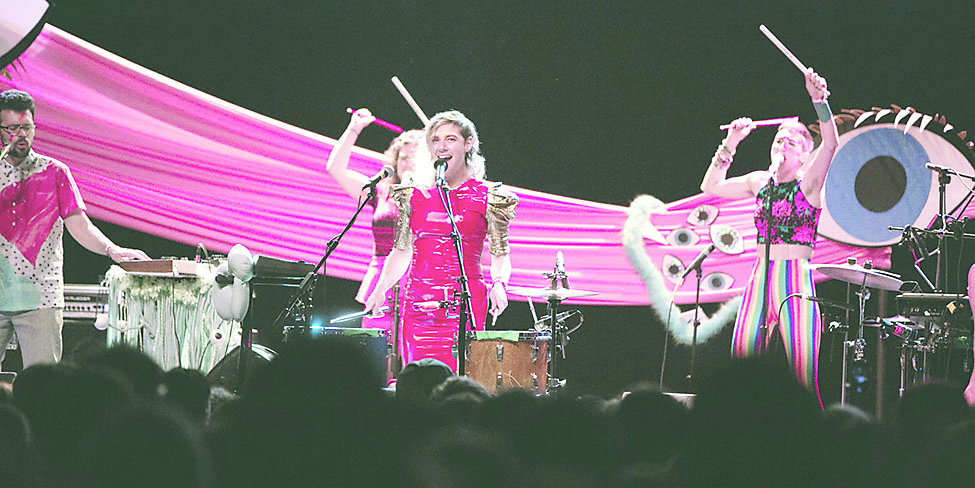By Joan Hawkins
There was something apocryphal about the death of Leonard Cohen. He passed away on November 7, 2016. But we didn’t actually get the news until November 10, two days after the election. He was 82. He had been ill for some time. Still, for fans still reeling from Donald Trump’s victory, the two events—the U.S Presidential election and the passing of one of the great poet-songwriters of the 20th century– seemed inextricably linked. That week Saturday Night Live opened with Kate McKinnon, the SNL actress who had played Hillary Clinton throughout the campaign, singing a serious cover of Cohen’s “Hallelujah.” The following night, John Oliver announced Cohen’s death after a lengthy discussion of what Trump’s presidency might mean. And writing for the Paris Review, Adam Shatz noted that he couldn’t help connecting Cohen’s death to the election. “Was it a sign of some sort…Did Trump kill him?” On Facebook, fans posted seemingly prophetic lines from Cohen’s songs: “I have seen the future, Brother. It is murder.” And the title of his recent album took on a certain grim irony, You Want it Darker.
Poet-Songwriter
Cohen was born in Montreal, on September 21, 1934, to a well-to-do Jewish family. And like all Jews who grew up during World War II, his coming of age was marked and marred by the near genocide of his people. We often think of him bursting on the scene with romantic songs like “Suzanne” and “So Long Marianne.” But many of his earliest poems were very dark. “My lady was found mutilated/ in a Mountain Street boarding house,” he wrote in his first book (“Ballad” Let us compare mythologies 1956). His third Book, Flowers for Hitler, (1964) made the source of some of his darkest obsessions very plain, with poems like “Goebbels Abandons His Novel and Joins the Party,” “Hitler the Brain Mole,” and my personal favorite, “All There is to Know about Adolph Eichmann,” Cohen’s riff on what Hannah Arendt famously called “the banality of evil.
Cohen published four books of poetry and two novels, The Favourite Game (1963) and Beautiful Losers (1966), before starting to record music. He has said that he started writing songs to make some money, since poetry, even award-winning poetry, doesn’t pay very well. But he also regarded songwriting as a sort of logical next step. Many of his early poems have a song-like rhythm to them. “Suzanne,” for example, was a published poem, “Suzanne Takes You Down” before it was a song. And he once said that he always heard music when he wrote. “All of my writing has guitars behind it, even the novels.”
The problem was, he didn’t think he could sing. There’s a line in a mid-career Cohen song “Tower of Song,” that always got an appreciative laugh in concerts, “I was born like this/ I had no choice/ I was born with the gift of a golden voice.” Cohen’s voice was more like Dylan’s than like the cantors he grew up with; not pretty, but a powerful delivery relay for the message. Some people say it was Dylan who gave Cohen the courage to record. Others say it was listening to Nico night after night at the Dome on
New York City’s 8th Street. But it was John Hammond who got him into the studio. And for those of us who heard those first two albums, Songs of Leonard Cohen (1967) and Songs from a Room (1969) back in the day, the fact that Leonard Cohen didn’t sound like Paul McCartney was beside the point. Or perhaps, it was the point.
Cohen is frequently compared to Dylan, but they mined different cultural seams. If despite his wishes, Dylan became ‘the voice of a generation,’ Cohen was more like a secret handshake. Initially, he did not write explicitly political songs, except in the sense that he wrote brutally honest love songs. And as sexual theory teaches us, every sexual encounter is political, every relationship a delicate negotiation of power. “I believe that you heard your Master sing,” he wrote in “The Master Song.”
Sex, death and despair
In 1967, nobody except Leonard Cohen and Frank Zappa (another “secret handshake” musician) was singing explicitly sexual lyrics, the kinds of songs AM radio wouldn’t play. That was the year The Doors were banned from future appearances on the Ed Sullivan Show, because Jim Morrison refused to change the lyrics of “Light my Fire.” “Come on, Baby, light my fire,” was titillating, but nowhere near as explicit as Cohen’s “you kneel for him to come” (“Master Song”). As his career went on, sex was a through line. “I love to see you naked over there, especially from the back,” (“Take this Longing from My Tongue,” New Skin for an Old Ceremony 1974), “my mouth on the dew of your thighs,” (“Take this Waltz” I’m your man, 1988), and most explicitly, in a song about Janis Joplin, “giving me head on the unmade bed/ while limousines waited in the street” (Chelsea Hotel #2, New Skin for an Old Ceremony, 1974).
But he also continued to write in the troubadour tradition of unrequited love. “Take this longing from my tongue,” he implores on the same album. And given all that has been written about him since he died, I am surprised that nobody has mentioned this. Cohen was the last Western writer I know writing in the narrative voice of a modern-day knight petitioning a lady for her favor, and with him an entire rich Western poetic tradition of troubadour poetry also dies.
It’s perhaps not surprising that Cohen didn’t get much air time. As David Remnick noted in his wonderful recent New Yorker essay, Cohen’s songs have been “death-haunted…since his earliest verses.” Side One of Songs from a Room ends with “Seems So Long Ago, Nancy,” an explicit song about suicide. “Nancy was alone/A forty-five beside her head/An open telephone.” The song was inspired, he said, by a woman he’d known in Montreal. “I think that the world throws up certain kinds of figures. Sometime in abundance, sometimes very rarely, and that some of these figures act as archetypes or prototypes for another generation which will manifest these characteristics a lot more easily, maybe a lot more gracefully, but not a lot more heroically. Another twenty years later she would have been just like you know, the hippest girl on the block. But twenty years before she was – there was no reference to her, so in a certain way she was doomed.”
If the sex and death weren’t enough to keep him off the air, there was a dark despair that often showed up in his work. Throughout most of his life, he suffered from depression, a term he did not use lightly. “When I speak of depression,” he told a Guardian reporter in 2012, “I speak of a clinical depression that is the background of your entire life, a background of anguish and anxiety, a sense that nothing goes well, that pleasure is unavailable and all your strategies collapse.” Like many people who suffer from this illness, he saw the world perhaps too clearly.
Even after playing the 1970 Isle of Wight concert, in front of 600 thousand people, he was rarely heard on the radio—even FM. In San Francisco, where I grew up, the only DJ who regularly played him was Dusty Street, the first and, for many years, only woman DJ on the West Coast. And she mostly played him in an off-peak time slot. 6 a.m. on Saturday morning. On a show unofficially designated as a woman’s show. Here Cohen played off against Joni Mitchell, some Dylan, Billie Holiday and Miles Davis’s Kind of Blue (1959). It was an interesting mix, but only nursing moms, students pulling all-nighters, and people who had odd work schedules like mine ever heard it. Most people were introduced to Cohen by friends. If you wanted to hear his music, you pretty much had to buy his albums. Or hang with people who did. Judy Collins recorded “Susanne” (In My Life, 1966), so at least one of his songs was well-known. But many people never heard Leonard Cohen’s voice until Robert Altman used Songs of Leonard Cohen as the soundtrack for his 1971 film, McCabe and Mrs. Miller.
The Music
As I said earlier, Cohen is often compared to Bob Dylan. Both are Jewish and literary, both use Biblical imagery, and both write lyrics that demand your attention. But both are also consummate musicians, and when Dylan talked to David Remnick recently about Cohen’s work, it felt like a breath of fresh air to me, as though someone were finally setting the record straight. “When people talk about Leonard, they fail to mention his melodies, which to me, along with his lyrics, are his greatest genius,” Dylan said. “Even the counterpoint lines—they give a celestial character and melodic lift to every one of his songs. As far as I know, no one else comes close to this in modern music. “(New Yorker, October 17, 2016).
The “celestial character and melodic lift” that Dylan mentions here help explain why even the darkest Cohen songs don’t necessarily feel depressing, and why so many of the songs have a spiritual feel about them, even though the lyrics are resolutely secular. And the melody he highlights illustrates the musical complexity that was there from the earliest recordings. Discussing “Sisters of Mercy” Dylan notes, “the verses are four elemental lines which change and move at predictable intervals, but the tune is anything but predictable…The first line begins in a minor key. The second line goes from minor to major and steps up, and changes melody and variation. The third line steps up even higher than that to a different degree and then the fourth line comes back to the beginning. This is a deceptively unusual musical theme, with or without lyrics. But it’s so subtle a listener doesn’t realize he’s been taken on a journey and dropped off somewhere.”
Cohen’s music is so lovely in its own right that Daniel Felsenfeld took the melody of “Suzanne” and used it as the basis of The Cohen Variations, a piece for solo piano that left Cohen’s evocative poetry behind. Recorded by classical pianist Simone Dinnerstein in 2012, the piece was broadcast and re-posted on the NPR site on November 11, 2016, one day after we heard that Cohen had died. A powerful reminder that we had lost a poet and a musician.
Cohen’s own musical arrangements became more lush and complex with each successive album until his last. Like Dylan, he continued to re-arrange the old standards, in part because his voice changed so much with age, deepening to a resonant low growl. The depth of the older Cohen’s voice, Remnick writes, “makes Tom Waits sound like Eddie Kendricks.” And it made it very difficult for him to sing the original arrangements. Cohen always loved women’s voices and used back-up singers and harmonies from his earliest albums. But the older he got, the more he relied on women to carry those melodies that Dylan praised so highly. The cover art for Ten New Songs (2001) features photos of both Cohen and his longtime backup singer, collaborator, songwriter and producer-friend Sharon Robinson, Cohen’s way of acknowledging his debt to the women who had his back.
Musically, too, the compositions expanded. In 1988 with I’m Your Man—both the studio album and the tour—Cohen settled into a complex international mix, that became his characteristic pattern for the next 26 years. In his book Leonard Cohen: A Remarkable Life, biographer Anthony Reynolds observes, “…in almost every respect I’m Your Man marked not so much a progression but an evolutionary leap forward…Cohen’s new musical canvas was rich and wide, with its bold and bald use of sequencers, drum machines, synclavier, and synths all mixed exotically with the lingering eastern European textures of the bouzouki, the oud and the heart rending (old Russian school) violin.” At the same time, Cohen began collaborating with other musicians on old favorites. “Who by fire,” Cohen’s riff on the Yom Kippur prayer, was first recorded for New Skin for an Old Ceremony. In 1989 he performed it live with jazz saxophonist Sonny Rollins, letting Rollins do a full minute lead-in before he took the mic. In 2012 and 2013 he performed the same song with Flamenco guitarist Javier Mas, giving it a much different arrangement and, for those who know the history of Andalusia’s Jews, a much different feeling. In Vienna (2013), Mas played 4 full minutes before Cohen began to sing. And if Mas had not nodded to the poet multiple times, I wonder if Cohen would have sung at all.
Cohen the seeker
As mentioned earlier, Cohen was born into an observant Jewish family. His grandfather was a Rabbi and he always maintained ties to the Jewish faith and traditions, often weaving Biblical references into his songs. His most recent album, You Want It Daker, was released in October, just weeks before his death. The title track lapses into Hebrew at exactly the moment that Cohen the narrator says he’s ready to die. “Hineni Hineni/ I’m ready my Lord.” As Remnick reports, “Cohen asked Gideon Zelermeyer, the cantor at Shaar Hashomayim, the synagogue of his youth in Montreal, to sing the backing vocals.” So both musically and spiritually, the album seems to have brought Cohen full circle.
Throughout his life, Cohen was spiritually restless, studying the Kabbalah, the chief mystical text of Judaism, and the I Ching, candle magic, alchemy and Buddhism. There is a story that he once looked at the candle arrangements in Edie Sedgewick’s rooms at the Chelsea Hotel and correctly predicted a fire. Not because of the danger posed by the candles themselves but because their arrangement seemed to be casting a bad spell. “She shouldn’t fool around with these things,” he reportedly told one of Edie’s friends, “because they are meaningful. Her friends should tell her.” He danced with the Hare Krishnas for awhile (“no robes”) and flirted with Scientology.
But his deepest commitment was to a Japanese Zen master named Kyozan Joshu Sasaki Roshi. (“Roshi” is an honorific for a venerated teacher and Cohen always referred to him that way). Until the early 90s, Cohen used to study with Roshi at the Zen Center on Mt. Baldy in the San Bernardino Mountains, usually for a few months at a time. But after a tour that found him drinking too much (“I was drinking at least three bottles of Château Latour before performances,” he told David Remnick), Cohen moved to Mount Baldy for six years. He became a monk in 1996 and was dispirited to find that he still suffered profoundly from depression. He tried anti-depressants. He tried writing through the depression. Finally he went to Mumbai, in the hope that another teacher, this one following the path of Advaita Vedanta, a Hindu discipline, could help him.
Before he left on his spiritual quest, Cohen made the fatal mistake of ceding nearly absolute control of his financial affairs to Kelly Lynch. Lynch had been his business manager for nearly 17 years, and, at one time, briefly his lover. Cohen trusted her completely. And she abused that trust. In 2004, one of Lynch’s disgruntled former lovers walked into an L.A. antique shop owned by Lorca Cohen, Leonard Cohen’s daughter. After looking around for awhile and poking things, he went to the counter and suggested, sotto voce, that Ms. Cohen look into her father’s finances. She did and then contacted her father. Lynch had embezzled millions of dollars from his accounts. Leonard fired her immediately and sued her (although there’s at least one story that Lorca had to persuade her father to take action; he was very reluctant to get involved with litigation). The court ruled in Cohen’s favor, awarding him more than five million dollars. But that was just the beginning. Outraged that Cohen had sued her, Lynch began calling Cohen twenty times a day and sending intimidating e-mails, some directly threatening him. He took out a restraining order, which she ignored. “It makes me feel very conscious about my surroundings,” Cohen said at a subsequent trial. “Every time I see a car slow down, I get worried.” The next few years were just hell. Lynch took to cyberspace, posting on every message board she could find. Some posts were conspiracy theory jeremiads about Phil Spector’s trial (Spector had produced Cohen’s 1977 album Death of a Ladies Man); some accused Cohen of tax fraud, plunging Cohen into yet another round of hearings. Luckily his partner Anjani Thomas knew a good music industry lawyer, Robert Kory. Kory already had more business than he could handle. “But when Leonard Cohen shows up at your office,” he said, “what are you going to do? Close the door?” Lynch was sentenced to eighteen months in prison and five years probation.
But even though Kory deferred his fees, Cohen was broke. He never managed to collect the damages the Court had awarded him. And it was clear that he would need to return to the stage if he was going to have any money for his retirement or for his children. In 2005, the music community gathered to make the documentary Leonard Cohen: I’m Your Man (Lian Lunson, 2005), featuring interviews with Cohen in his L.A home and a motley crew of musicians covering Cohen’s songs. Rufus Wainwright was one of the organizers; performers include the McGarrigles, Nick Cave, Bono, The Edge, Perla Batalla, Julie Christensen and Cohen, himself, blowing them all out of the water, at the film’s end.
In 2007, he began conceiving his tour, with a full band: three backup singers, two guitarists, drummer, keyboard player, bassist, and saxophonist. He rehearsed the band for three months before going on a tour that lasted 5 years. Night after night, Cohen took to the stage dressed in his suit and fedora. And every night at least once, he would drop to his knees in front of the audience. Every single review I read gave him kudos. The tour, Sylvie Simmons writes, “not only restored Leonard’s lost funds, it improved on them considerably.” And it vindicated his status as an artist. After Cohen died, a friend of mine who saw him during that tour wrote “We went to see him at the Barclay Center in Brooklyn. He was nearly 80, but performed for almost four hours straight. I thought he might live forever. And I wish he could have.”
I’m your man
A lot has already been written about Cohen’s reputation as a ladies’ man, his personal relationships with women and the strong role women fans have played in his success. As a young man, he had what David Remnick called “a kind of Michael Corleone Before the Fall look, sloe-eyed, dark, a little hunched.” (New Yorker, October 17, 2016). And his most well-known muse and lover, Marianne Ihlen said that when they lived together on the Greek Island of Hydra “all the girls were panting for him.”
Cohen was definitely a gentleman of the old school. Meeting him for the first time, Sylvie Simmons wrote, “he is a courtly man, elegant, with old-world manners. He bows when he meets you, stands when you leave, makes sure that you’re comfortable and makes no mention of the fact that he’s not…” Like Lawrence Ferlinghetti, he believed that women were mysterious and magic. And in many a song, the narrator speaks of being struck dumb by a woman’s beauty.
He loved women. And he spent his long career writing about and to us. He had a long list of lovers and several serious long term relationships with women including Suzanne Verdal (“Suzanne”), Marianne Ihlen (“So Long, Marianne”), Suzanne Elrod (the mother of his children Adam and Lorca; ) Julie Christensen, Dominique Isserman Furey ( a French photographer), Rebecca De Mornay, and most recently, singer Anjani Thomas.
And women loved him back. Iggy Pop tells a story about Leonard Cohen that goes something like this. Iggy was in L.A. recording an album. One night Cohen called and invited him over. Cohen said he had a personal ad from a girl “who says she wants a lover who will combine the raw energy of Iggy Pop with the elegant wit of Leonard Cohen. I think we should reply to her as a team.” Pop reminded Cohen that he was married and said something like “you’re going to have to do this on your own.” And just this year, Lail Arad recorded “1934 (A Song for Leonard Cohen)” for his birthday. “Yes, I would have been your lover,” she sings. “No, I wouldn’t ask for more/ It’s just a shame that you were born/ in 1934.”
More importantly, women loved his work. When I think of his appeal to women, I’m reminded of an old story about Frank Sinatra, another famous ladies’ man. Someone supposedly asked Old Blue Eyes once to explain his popularity with women. “It’s easy,” Sinatra answered. “All you have to do is listen.” Cohen listened. And that fact was reflected back in his songs.
But, as he told Simmons, “Everything changes as you get older. I never met a woman until I was sixty-five. Instead, I saw all kinds of miracles in front of me.” In the past he said, he had always viewed women through his own “urgent needs and desires, what they could do for me.” But in his mid-sixties—about the time he left the Monastery and his depression at long last began to lift—he “began to see the woman standing there.”
As I wrote above, Cohen’s earliest forays into political songwriting had to do with family politics and patriarchal structures. So it’s fitting, that at the end of his life he would spend so much time trying to educate people about his daughter’s family. In February 2011, Lorca Cohen gave birth to Viva Katherine Wainwright Cohen. The baby’s father was Rufus Wainwright, an openly gay musician. Wainwright had wanted to honor one of his mother’s last wishes, that he would have a child. Lorca and Wainwright had always been close, and so—Viva. When Wainwright’s fans referred to Lorca as a “surrogate mother” online, the whole family, including Leonard, stepped up to correct them. Lorca is Viva’s mother and will be raised by Lorca, Wainwright, and Wainwright’s husband Jörn Weisbrodt, Daddy #2, Leonard Cohen said. And yes, he was doting grandfather to all his grandchildren.
Hey, that’s no way to say goodbye
In 1988, I went to the Berkeley, California I’m Your Man Tour concert. Like a lot of Cohen fans I was excited. Cohen hadn’t had a strong album in years. Songs of Love and Hate (1971) hit the U.S. charts at 145, and even hardcore fans like me didn’t find the record until it had been out for awhile. There hadn’t been any displays in Odyssey records. No reviews in the press I regularly read. So it was only thanks to a record store clerk who knew me, that I found the album at all. New Skin for an Old Ceremony (1974), which I loved, had sold well in Europe but had not placed in the U.S. charts. Death of a Ladies Man (1977), the record Cohen made with Phil Spector, had been a disaster. I actually like the album, especially the song “Memories,” but there is little on it to appeal to fans dedicated to Cohen’s intimate and confessional style. Recent Songs (1979) and Various Positions (1984) did not place in the U.S charts. Cohen was still popular in Europe, but his North American career seemed to be on the skids. He was seriously depressed and the fact that he got it together to record I’m Your Man (1988) speaks to his sheer force of will and his spiritual practice.
That album was an evolutionary leap. Lush, evocative, speaking very much to the geopolitical moment. The record had already gotten good reviews and some FM airtime. At that time in my life, I was in graduate school and hung with a Downtown No-Wave crowd. And I still remember the energy that swept through the auditorium, as Cohen started “First We Take Manhattan,” Manhattan having been the birthplace of the Downtown scene.
They sentenced me to twenty years of boredom
For trying to change the system from within
I’m coming now, I’m coming to reward them
First we take Manhattan, then we take Berlin.
As he hit that last line, some men in the back of the auditorium unfurled an ACT UP banner, and the audience roar was deafening.
About halfway through the concert, the band left the stage. Only the backup singers stayed. Cohen had an amplified acoustic guitar, and he strummed a few chords that we all recognized. The opening of “The Partisan,” a World War II song. A song of the French Resistance, that he had recorded for Songs from a Room.
The eighties had been a hard time. A terrible recession, AIDS, the increase in homelessness, Iran Contragate, and the continuing worry about a possible U.S war in Central America. The U.S. role in El Salvador, in Nicaragua and in the atrocities being committed in Guatemala had horrified many of us, and in the East Bay (where Berkeley is located) a number of churches had established themselves as sanctuaries for Central American refugees. There had been violence on Berkeley campus, when the city police were called in to dismantle a cardboard shanty town that the Committee for Divestment from South Africa (still an Apartheid state) had erected in the middle of Sproul Plaza. For the first time since 1969, police helicopters flew over the University of California, and AIs (TAs, as we called ourselves) met to discuss a classroom walkout in support of the students who had been arrested. And to develop a grading policy that would not punish people for activism. In late April, I was barred from entering Dwinelle Hall, where the class I taught met. And I remember yelling that I had been planning to teach Sylvia Plath, but any students who wanted to meet me at the Café Mediterraneum should come prepared to discuss political theory.
So that is what had been happening in Berkeley, just days prior to Leonard Cohen strumming the first chords of “The Partisan.” The auditorium was very quiet. And then in that way he had of leaning into the microphone, he introduced the song. “I still like to sing this song,” he said in that phenomenal, basso voice. “Because I think there are still things worth resisting.”
Two days after we got the news that Cohen had died, a friend who was with me that 1988 night sent a YouTube link to the song. Her message said simply, “I think there are still things worth resisting.” In the wake of this election and the difficult times we’re facing, I believe that is what Leonard Cohen would still tell us.
The wind, the wind is blowing
Through the grave, the wind is blowing
Freedom soon will come.
We will rise from these shadows.
Author attribution
Joan Hawkins is an Associate Professor of Cinema and Media Studies in the Media School at IU. She has written extensively on horror and the avant-garde. Her books are Cutting Edge: Art-Horror and the Horrific Avant-garde, and Downtown Film and TV Culture 1975-2001. She is currently co-editing an anthology on William S. Burroughs. She has been a fan of Leonard Cohen since she first heard his albums, at the age of 16.

